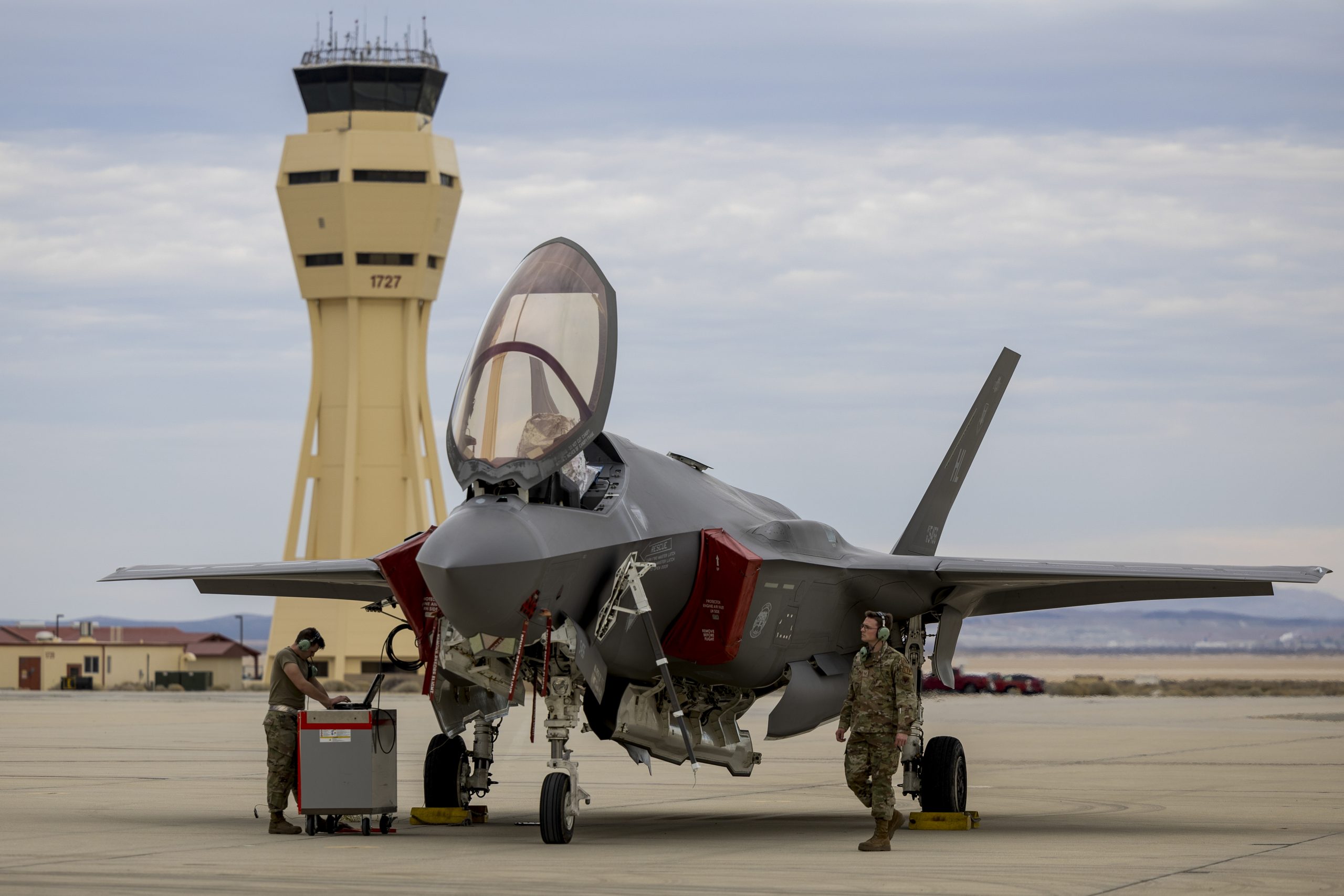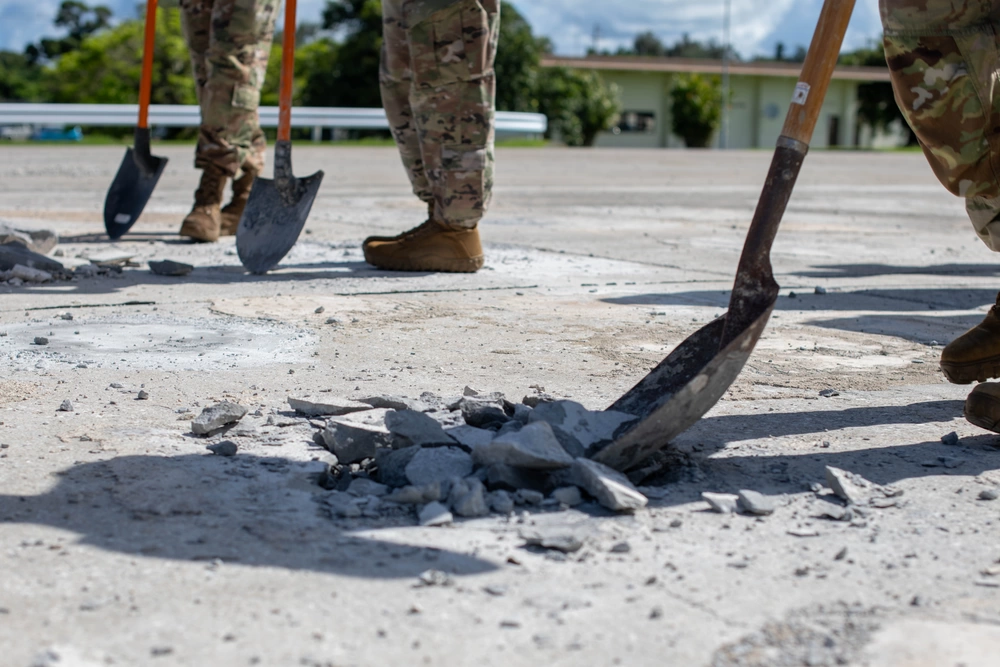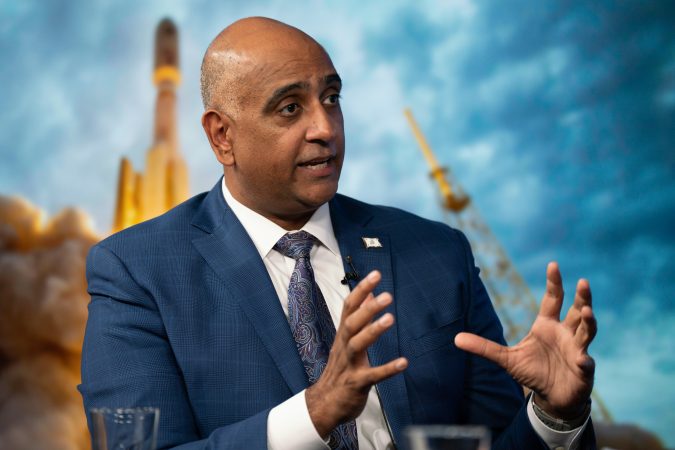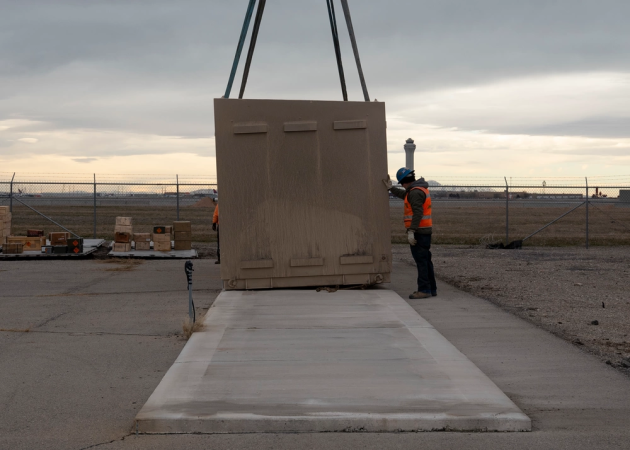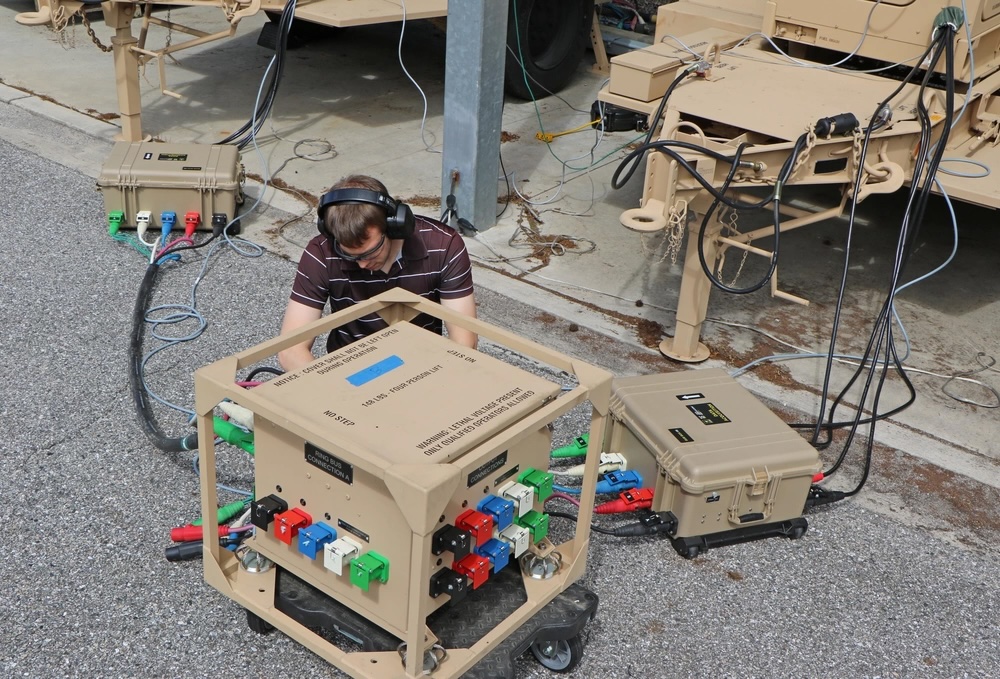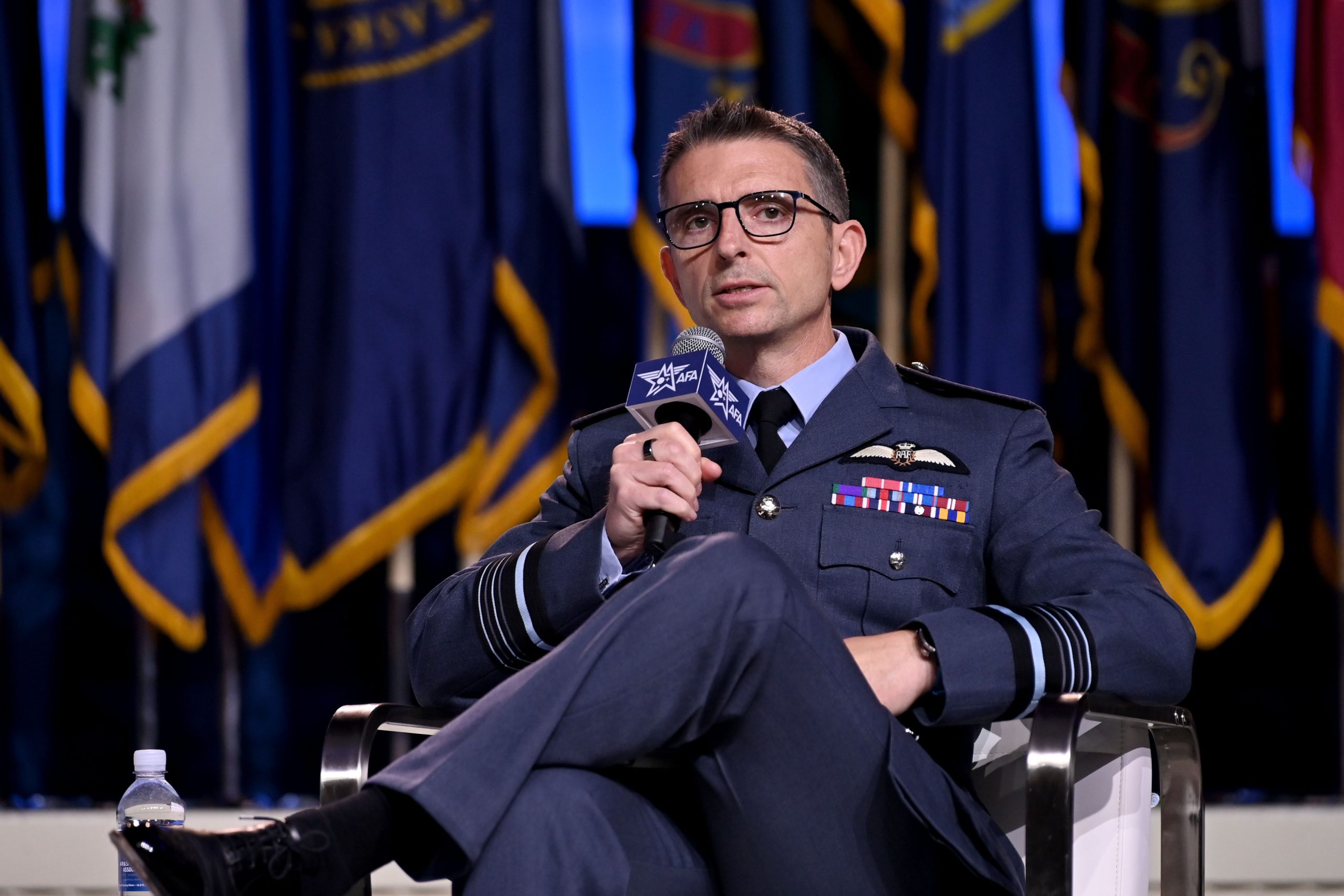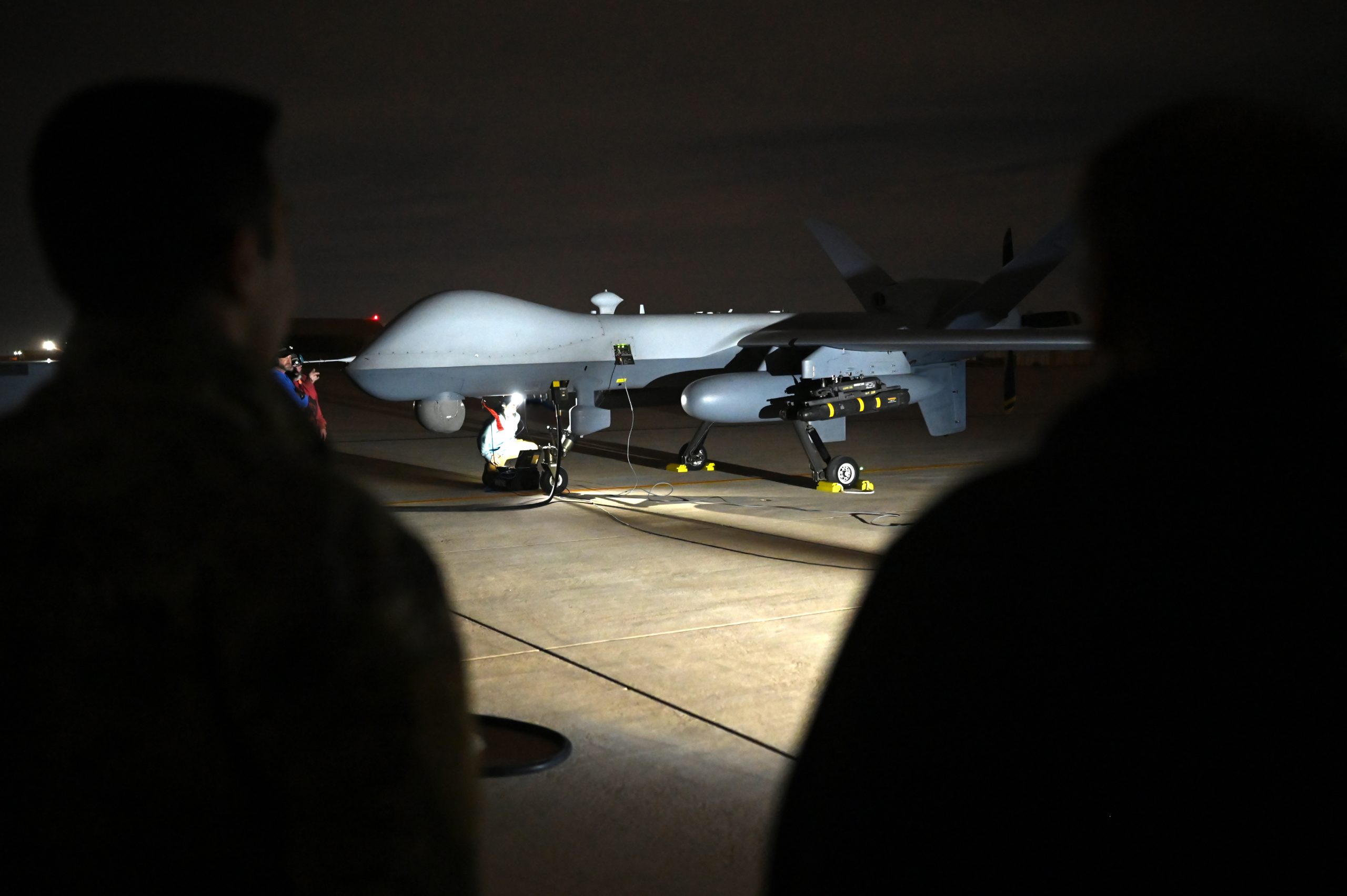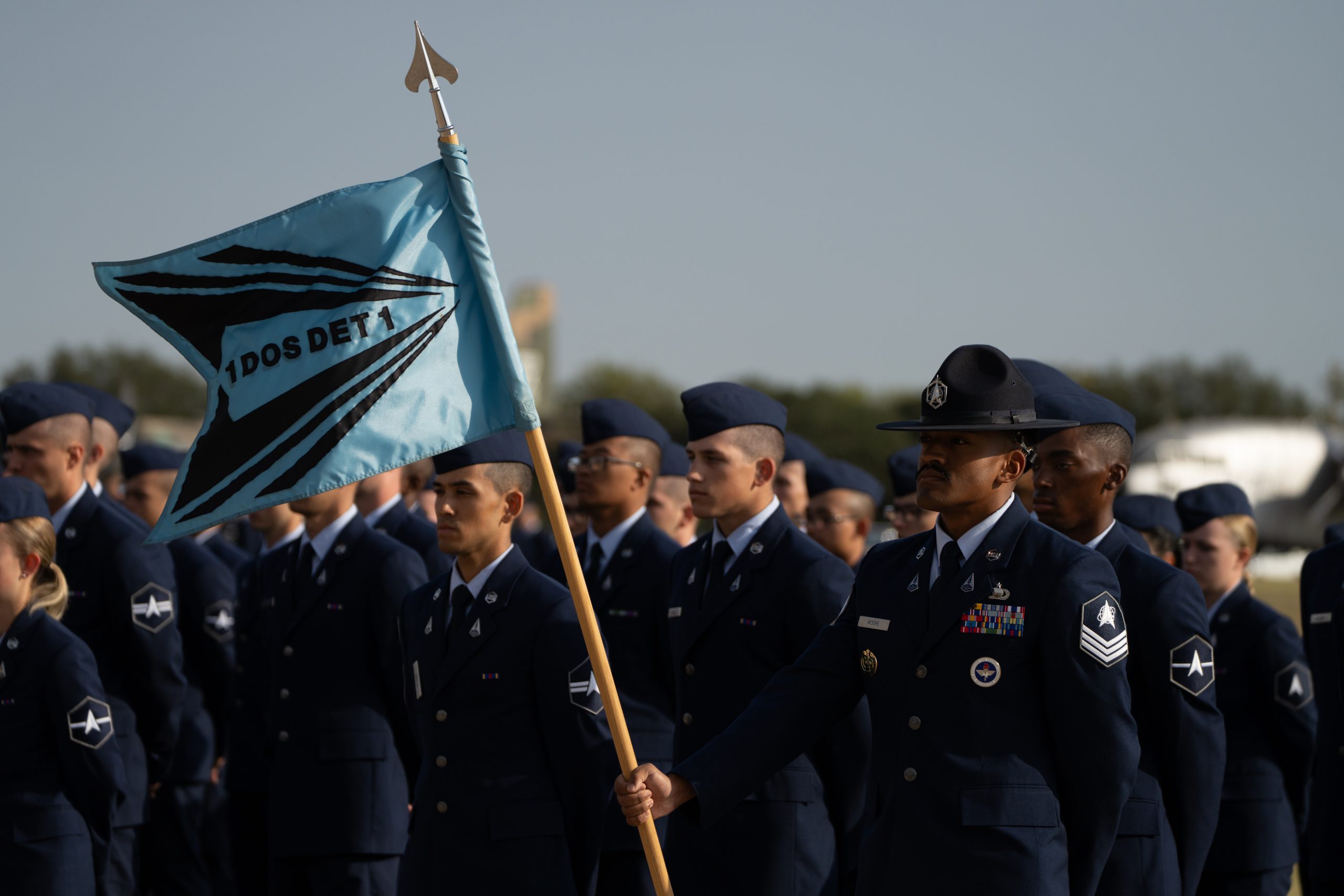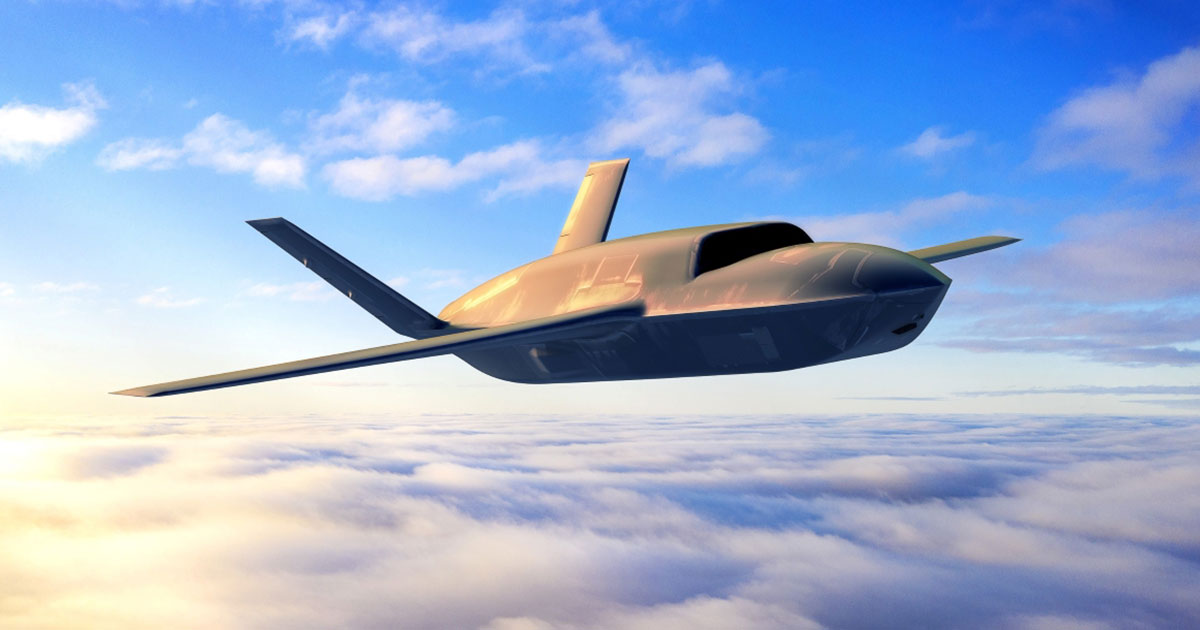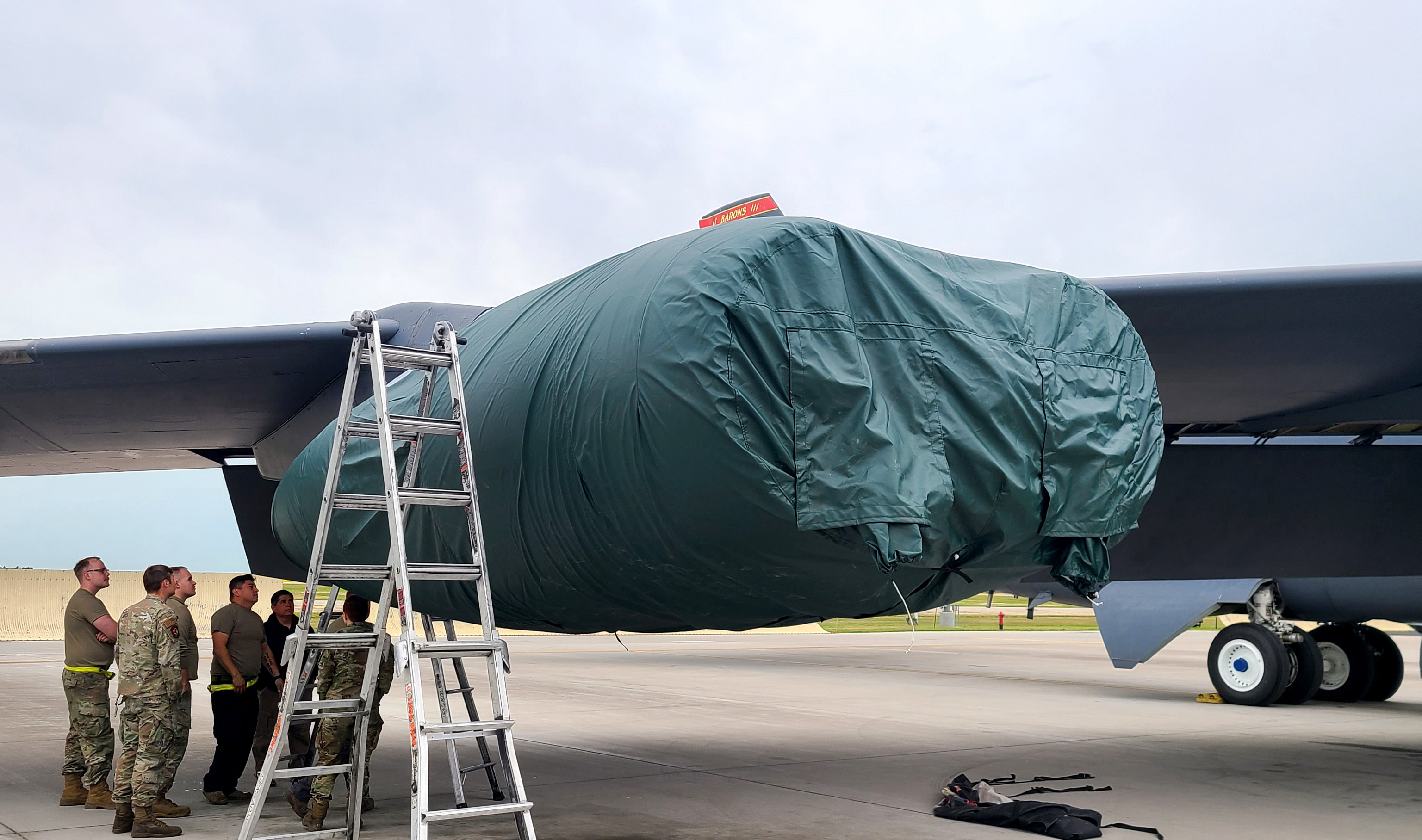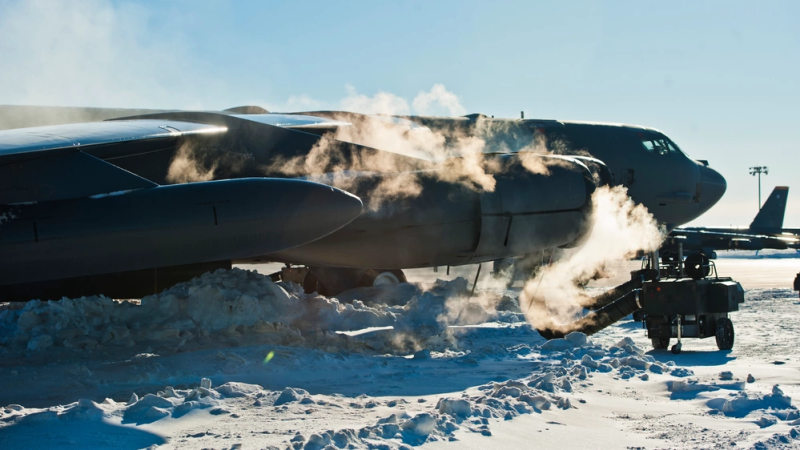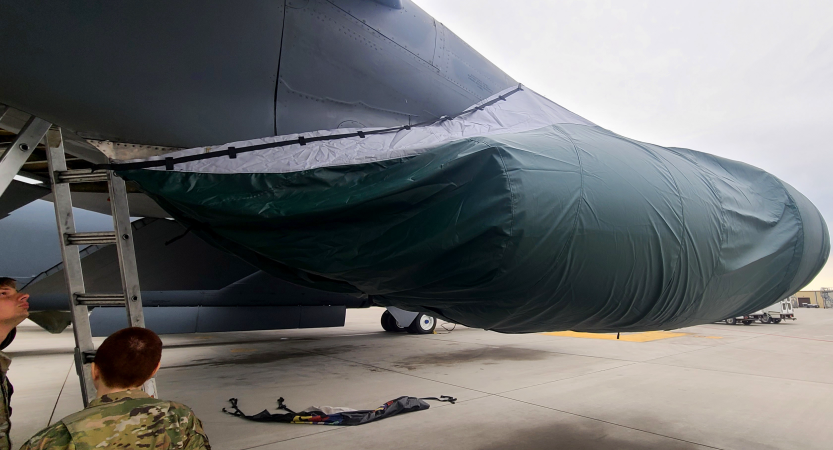NATIONAL HARBOR, Md.—Col. Larry Fenner Jr., the commander of the Air Force’s only Spectrum Warfare Wing, came to the Association of Old Crows electronic warfare trade show looking for tools he can use to automate key parts of his mission workload. He’s going to have to keep looking.
“I’ve seen a lot of promising tools that are coming out here, but I’m not sold yet,” he told Air & Space Forces Magazine on the sidelines of the conference. “I’m going to do a little bit more engagement and see what solutions industry has available… to make me go faster and optimize my reprogramming process.”
That process—reprogramming the Mission Data Files, or MDFs, for modern warplanes—is one of the core missions of Fenner’s unit, the 350th Spectrum Warfare Wing, based out of Eglin Air Force in Florida. MDFs are the brains of a fifth-generation warplane like the F-35, helping its systems distinguish friend from foe by their electromagnetic signatures and programming its EW equipment with the latest data about enemy EW tactics.
Historically, Fenner said, reprogramming was run as an “industrial model … maybe annually or semi–annually.” The 350th SWW was set up in 2021 in part to speed that up and made the process relevant in a shooting war.
“Our goal is to always go faster,” he said, “It will never be fast enough for me.”

Although Fenner declined to give any specifics about the current reprogramming cycle, a U.S. Navy press release in October noted that the 513th Electronic Warfare Squadron, which falls under the 350th, had “cut days off our timeline” for reprogramming MDFs for U.S. Marine Corps F-35. The squadron helped “compressed the production timeline by half,” the release stated.
Force commanders set the operational tempo, Fenner said, “and what we’re trying to do with the reprogramming cycle is to be able to keep up with whatever tempo they set.” He said his job was to “revolutionize the rapid reprogramming process so that if the Air Component Commander gives us a short timeline, we need to be able to stress the system to be able to accommodate that.”
The current process relies on data from sensors carried by the F-35 and other aircraft, sent back after they land to reprogramming centers in the U.S., where they’re pored over by engineers. “They do the deep dive analysis on what information’s changed,” Fenner explained. “Is it significant enough to push into a Mission Data File [update]? And if it is, they do the re-engineering … and pushing it back out to the warfighter, so that they have the latest information to sense, identify, locate and counter” enemy EW.
Automating the first part of that process—identifying and isolating novel or anomalous data back in the reprogramming centers—is at the top of the list of immediate capabilities Fenner is looking for. ”That would be a huge win,” he said.
Beyond that, he said, he’s looking for “game-changing” capabilities that would identify such anomalies “at the forward edge” during a mission and “kick that back to reprogramming centers airborne, so by the time they land, we’ve already rolled up our sleeves and are taking a look.”
He said he hasn’t seen such capabilities available yet, but added, “I’ve only been in the chair for a short period of time.” Fenner took command of the 350th SWW in July.
If he did find such a tool, Fenner said, he wouldn’t be able to buy it. “I can advocate. If I see a capability or solution out there that is going to help us, I can advocate for it. … But that’s where we have our break, because I can advocate only, but I’m not part of the acquisition process.”
Customer Base
Because the F-35 is a joint coalition aircraft, MDFs have to be reprogrammed not just for the Air Force, but for other U.S. military services and allied air forces. Fenner has a multiservice and multinational customer base.
“Spectrum is inherently joint,” he said, “because everybody has equities in the spectrum.”
The 513th Electronic Warfare Squadron runs reprogramming for all the U.S. services. Made up of Air Force, Navy, and Marine Corps military, civilian, and contractor personnel, the 513th leads operations at the United States Reprogramming Laboratory, which provides MDFs for the F-35.
Eglin is also home to the 80 Squadrons of the Royal Australian Air Force and the British Royal Air Force, formerly known as the Australian, Canadian and United Kingdom Reprogramming Laboratory, or ACURL, which develops, verifies, and validates F-35 MDFs for the three NATO allies.
“We incorporate our allies and partners in our exercises and share the data that we have to make sure that we’re all moving forward on the same page,” said Fenner.
